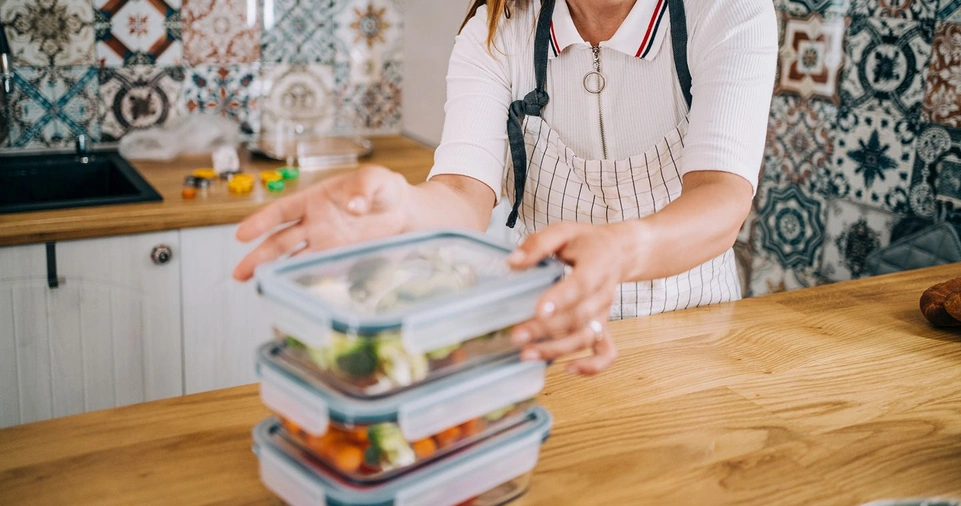Prep Meals Ahead of Time is a practical strategy to streamline your weekly routine, save time, and maintain a healthier diet.
By preparing meals in advance, you can ensure that nutritious options are always available, eliminating the need for last-minute cooking or unhealthy fast food choices.
Meal prepping also helps with portion control, reduces food waste, and supports long-term financial savings.
This guide provides actionable steps and tips for effectively prepping your meals, from selecting the right foods to mastering storage and reheating techniques.
Whether you’re a busy professional or looking to enhance your meal planning habits, learning how to prep meals ahead of time can transform your approach to eating well and living efficiently.
What is Meal Prepping?
Meal prepping is the process of planning and preparing meals in advance, typically for the week ahead.
It involves cooking, portioning, and storing meals or ingredients so they are ready to eat or cook later. You can prep full meals or individual components like grains, vegetables, and proteins.
Benefits of Meal Prepping
Meal prepping offers a wide range of benefits beyond just convenience.
| Benefit | Details |
|---|---|
| Saves Time | No more daily cooking—just reheat and enjoy. |
| Promotes Healthy Eating | You’re less likely to eat fast food or processed meals. |
| Budget-Friendly | Reduces impulse buying and cuts down food waste. |
| Portion Control | Helps manage calorie intake and supports weight loss goals. |
| Reduces Stress | No last-minute dinner dilemmas or grocery store runs. |
| Supports Fitness Goals | Easier to track macronutrients and stick to a diet plan. |
ALSO READ: How to Teach Kids About Responsibility?
Types of Meal Prepping
You can choose a style of meal prepping based on your lifestyle and goals:
- Full Meal Prep – Cook and portion entire meals ahead of time.
- Ingredient Prep – Chop veggies, cook grains, or marinate proteins.
- Batch Cooking – Make large batches of soups, stews, or casseroles and freeze them.
- Grab-and-Go Prep – Pre-pack snacks, salads, or breakfast items like overnight oats.
How to Start Meal Prepping

Starting with a clear plan is essential for success. Here’s how to do it step-by-step:
Step 1: Set Your Goals
Do you want to save time, eat healthier, lose weight, or build muscle? Define your goals to determine portion sizes, ingredients, and meal types.
Step 2: Choose Your Prep Days
Most people prefer Sunday and Wednesday, but pick any day that fits your schedule. Start with prepping for 2-3 days, then expand.
Step 3: Plan Your Meals
Decide on meals for the week:
- Breakfasts (e.g., smoothie packs, oats)
- Lunches (e.g., grilled chicken salad)
- Dinners (e.g., stir-fry, sheet pan meals)
- Snacks (e.g., nuts, yogurt, veggies)
Step 4: Make a Grocery List
Write down every ingredient you’ll need. Check what you already have to avoid duplicates.
Step 5: Prep and Cook
- Chop all veggies at once.
- Cook grains (rice, quinoa, pasta) in bulk.
- Roast or grill proteins in batches.
- Assemble meals in containers.
Step 6: Store Properly
Use BPA-free containers. Label with the name and prep date. Store in the fridge or freezer depending on the item.
Essential Meal Prep Tools and Containers
The right tools can make prep smoother and faster:
| Tool | Use |
|---|---|
| Glass containers | For storing and reheating meals. |
| Mason jars | Perfect for salads and overnight oats. |
| Sharp knives | Speeds up chopping and slicing. |
| Cutting boards | One for veggies, one for meat to prevent cross-contamination. |
| Sheet pans | Great for roasting veggies and proteins. |
| Rice cooker or Instant Pot | Cook grains, soups, and meats effortlessly. |
| Measuring cups | For portion control and recipe accuracy. |
ALSO READ: How to Write Your First Blog Post: A Step-by-Step Guide for Beginners
Best Foods for Meal Prepping
Certain ingredients hold up better than others throughout the week. Choose wisely for taste and freshness.
| Food Group | Examples | Tips |
|---|---|---|
| Grains | Brown rice, quinoa, couscous | Cook in large batches and refrigerate or freeze. |
| Proteins | Chicken, turkey, tofu, eggs, legumes | Grill, bake, or sauté for variety. |
| Vegetables | Broccoli, carrots, bell peppers, spinach | Roast, steam, or eat raw depending on texture. |
| Fruits | Apples, berries, bananas | Pre-portion for snacks or add to oats and smoothies. |
| Snacks | Hummus, trail mix, Greek yogurt | Portion into individual containers for grab-and-go convenience. |
Meal Prep Safety Tips
Food safety is crucial to avoid spoilage or foodborne illness.
- Cool before storing – Let hot food cool slightly before placing in the fridge.
- Use airtight containers – Prevents contamination and keeps food fresh.
- Label everything – Include the prep date to track freshness.
- Observe shelf life – Most cooked meals last 3–4 days in the fridge.
- Reheat thoroughly – Heat to 165°F (74°C) to kill bacteria.
Beginner-Friendly Meal Prep Plan (Table)

| Meal | Recipe Idea | Prep Tips |
|---|---|---|
| Breakfast | Overnight oats with berries & chia seeds | Prep 3 jars in one go and refrigerate for up to 5 days. |
| Lunch | Chicken quinoa bowl with veggies | Grill chicken, roast veggies, and store in separate boxes. |
| Snack | Greek yogurt + granola | Portion granola separately to maintain crunch. |
| Dinner | Stir-fry with tofu and brown rice | Sauté ingredients and store rice and stir-fry separately. |
Advanced Meal Prep Strategies
If you’ve got the basics down, try these advanced strategies to level up your game:
- Use a Weekly Meal Prep Template: Plan your entire week on Sunday using a printable or digital planner. This helps reduce decision fatigue and grocery trips.
- Double Up Recipes: Make double portions of dinner to have leftovers for lunch the next day.
- Cook Once, Eat Twice: Roast a whole chicken and use it for wraps, salads, or soup throughout the week.
- Use the Freezer Wisely: Freeze meals like chili, lasagna, and burrito bowls for long-term storage. Always label with date and contents.
- Rotate Menus Every 2 Weeks: Avoid burnout by creating 2–3 rotating weekly menus to keep things exciting.
Meal Prep Mistakes to Avoid
Even seasoned meal preppers make mistakes. Avoid these common pitfalls:
| Mistake | Solution |
|---|---|
| Prepping too much at once | Start small—3 days at a time. |
| Lack of variety | Rotate recipes and use different spices or sauces. |
| Not storing food properly | Invest in airtight, microwave-safe containers. |
| Ignoring nutritional balance | Include protein, fiber, carbs, and healthy fats in every meal. |
| Skipping taste checks | Always test recipes before prepping large batches. |
ALSO READ: How to Choose a User-Friendly Laptop?
Conclusion
Mastering how to prep meals ahead of time isn’t just about convenience—it’s about creating a healthier, more intentional lifestyle.
With a little planning and the right tools, you can avoid mealtime chaos, reduce waste, and save both time and money.
Start small by prepping a few meals a week and gradually build your system. Stay flexible, experiment with recipes, and find what works best for your routine.
Whether your goal is weight management, stress reduction, or just eating better, meal prepping is a skill worth mastering.







